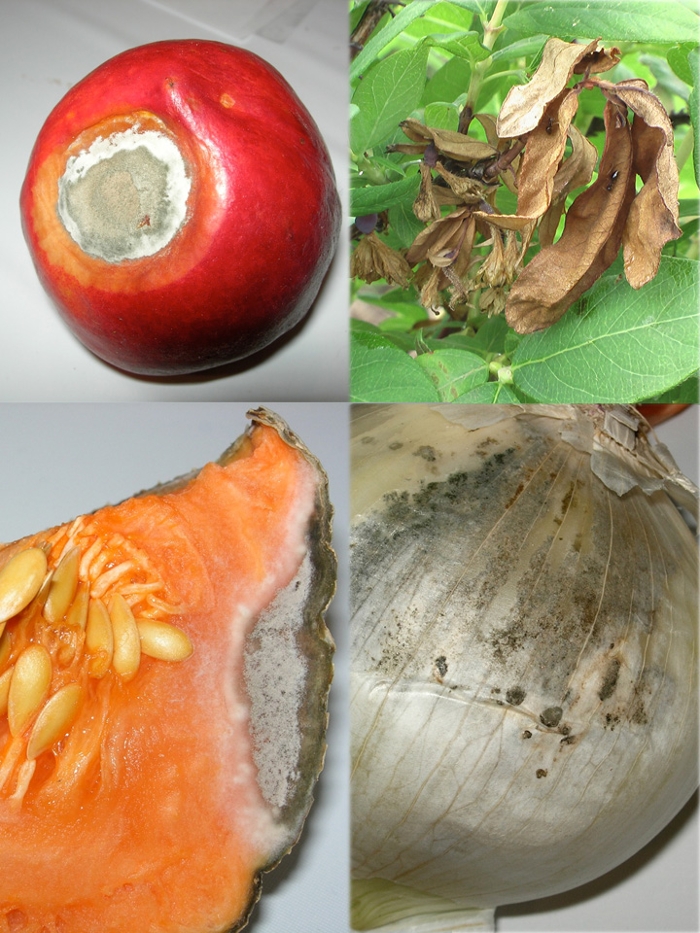
Botrytis
<i> Botrytis</i> sp.
This is a very common, wide-spread disease on many plants – especially strawberries, raspberries, beans, tomatoes and members of the cucumber family. Begonias are also commonly affected. Botrytis cinerea is the most common species, although other species of Botrytis can cause disease. In lilies, the disease is caused by Botrytis elliptica.
This disease needs high humidity and cooler temperatures in order to develop, so weather is a factor. If plants are wet for prolonged periods of time, or if plants are overcrowded and air circulation is poor, the disease is also more likely to develop. Plant injury caused by frost, strong winds, hail or hard rain is an opportunity for the disease to enter the plant.
Symptoms and disease development:
- The first symptoms are water-soaked spots on any plant part, often starting with the leaves near the base of the plant. The tissue later becomes soft and watery.
- The symptoms spreads to other parts of the plant like the stem, buds, flowers and fruit. The affected parts of the plant can form indentations or collapse.
- A grey mould may also develop which affects plants in different ways, such as damping-off in seedlings, fruit rot, stem rot or shoot blight. Death of plants is common.
- The mould is a greyish-brown mass of mycelium. Spores develop from the mycelium and can be spread by wind, water and human actions. Spores need wet conditions to germinate and can spread quickly (within one day). The disease can spread by both the mycelium (mould) or by spores.
- Mycelium development can be rapid and so can the resulting rot. Fruits (and vegetables) can rot in storage and can spread from fruit to fruit.
- The spores can over-winter on dead debris and infect plants the following year.
Control:
- Cut down the affected plants to the soil level. Remove and dispose of all infected plants. Disinfect your pruners and tools with Lysol to prevent spreading the disease. Burn the diseased plants or put them in the landfill, not the compost.
- Try to keep healthy plants as dry as possible by watering the soil, not the leaves. If plants are dense, thin to increase good air circulation.
- Don't over water plants.
- Next season, space plants wider apart to allow for better air circulation.

